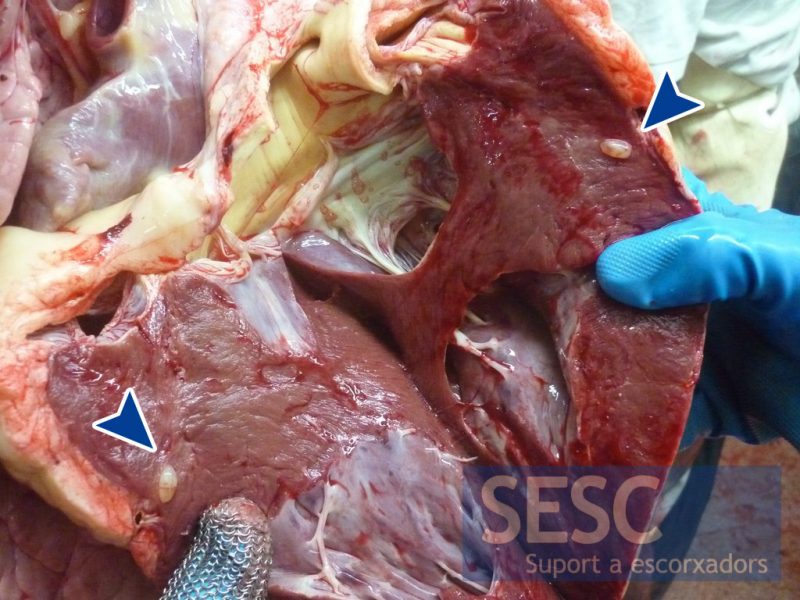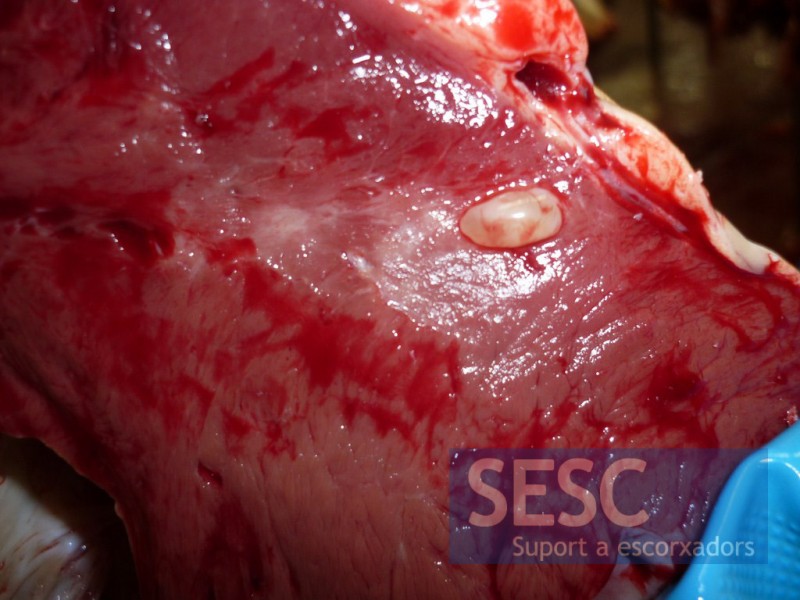08/02/2013
|
Bovine
1
Not always cysticercosis
The differential diagnosis of a lesion like this one should include:
- Bovine cysticercosis: First! The appearance of the lesion is compatible with a parasite vesicle. See entry on bovine cysticercosis.
- Other inflammatory lesions: Bacterial or Sarcocystis spp.
- Congenital cysts: Typically located in the valves.
- Neoplasms.
Although the macroscopic image was suggestive of bovine cysticercosis, the histopathological study showed that it was a benign mesenchymal neoplastic proliferation, being in this case the most likely differential diagnosis a myocardial adenomatoid tumor.





1 comment(s)
Comment from our LinkedIn group:
By Yves Robinson
Veterinary pathologist chez Canadian Food Inspection Agency
We have seen bovine myocardial epithelial inclusions in suspect cases of bovine cysticercosis.
The lesions are single or multiple, well circumscribed and found in the ventricular wall. Are made of squamous to cuboidal epithelial cells that form tubular, ductular, and acinar structures.
Ref. Baker et al. Vet Pathol. 30:82-88,1993